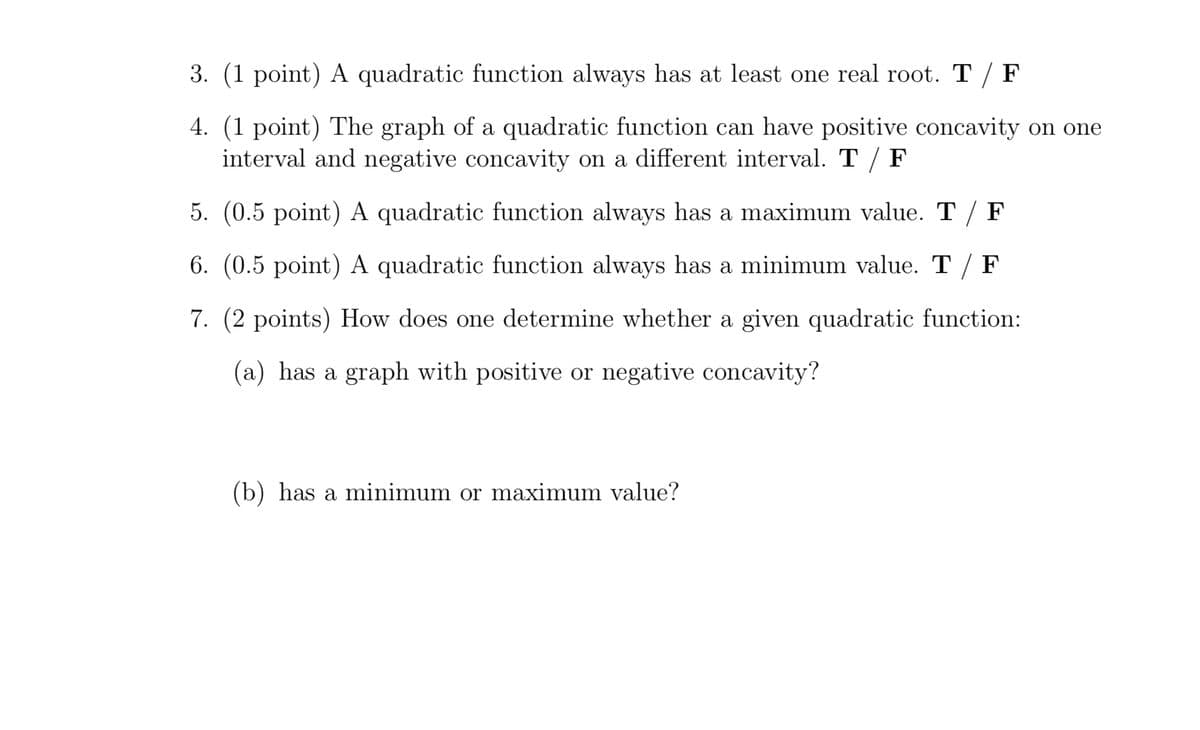3. (1 point) A quadratic function always has at least one real root. T/ F 4. (1 point) The graph of a quadratic function can have positive concavity on one interval and negative concavity on a different interval. T/F 5. (0.5 point) A quadratic function always has a maximum value. T / F
3. (1 point) A quadratic function always has at least one real root. T/ F 4. (1 point) The graph of a quadratic function can have positive concavity on one interval and negative concavity on a different interval. T/F 5. (0.5 point) A quadratic function always has a maximum value. T / F
Algebra & Trigonometry with Analytic Geometry
13th Edition
ISBN:9781133382119
Author:Swokowski
Publisher:Swokowski
Chapter4: Polynomial And Rational Functions
Section4.6: Variation
Problem 9E
Related questions
Question
3 4 5 pla

Transcribed Image Text:3. (1 point) A quadratic function always has at least one real root. T / F
4. (1 point) The graph of a quadratic function can have positive concavity on one
interval and negative concavity on a different interval. T / F
5. (0.5 point) A quadratic function always has a maximum value. T / F
6. (0.5 point) A quadratic function always has a minimum value. T / F
7. (2 points) How does one determine whether a given quadratic function:
(a) has a graph with positive or negative concavity?
(b) has a minimum or maximum value?
Expert Solution
This question has been solved!
Explore an expertly crafted, step-by-step solution for a thorough understanding of key concepts.
Step by step
Solved in 3 steps with 3 images

Recommended textbooks for you

Algebra & Trigonometry with Analytic Geometry
Algebra
ISBN:
9781133382119
Author:
Swokowski
Publisher:
Cengage

Algebra & Trigonometry with Analytic Geometry
Algebra
ISBN:
9781133382119
Author:
Swokowski
Publisher:
Cengage